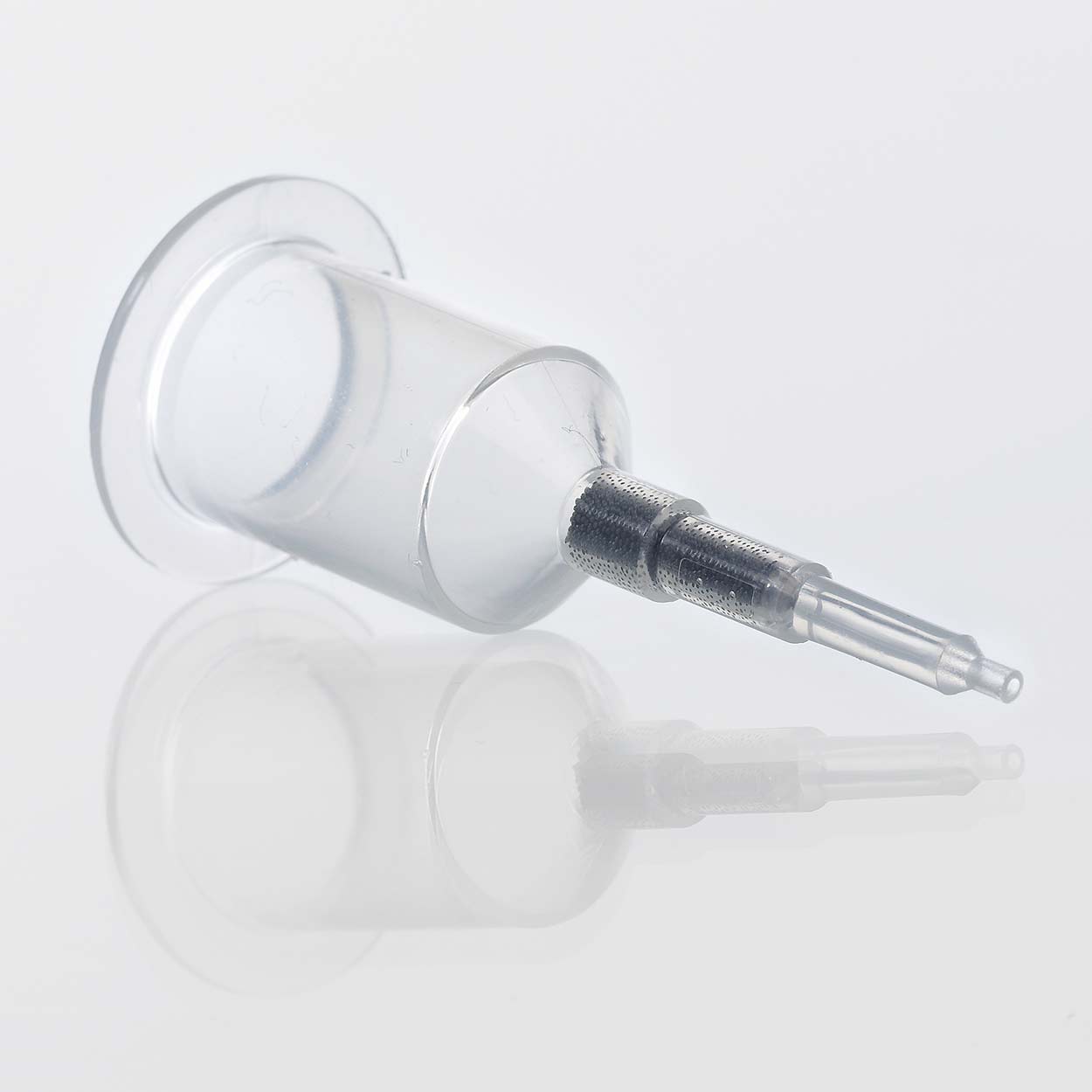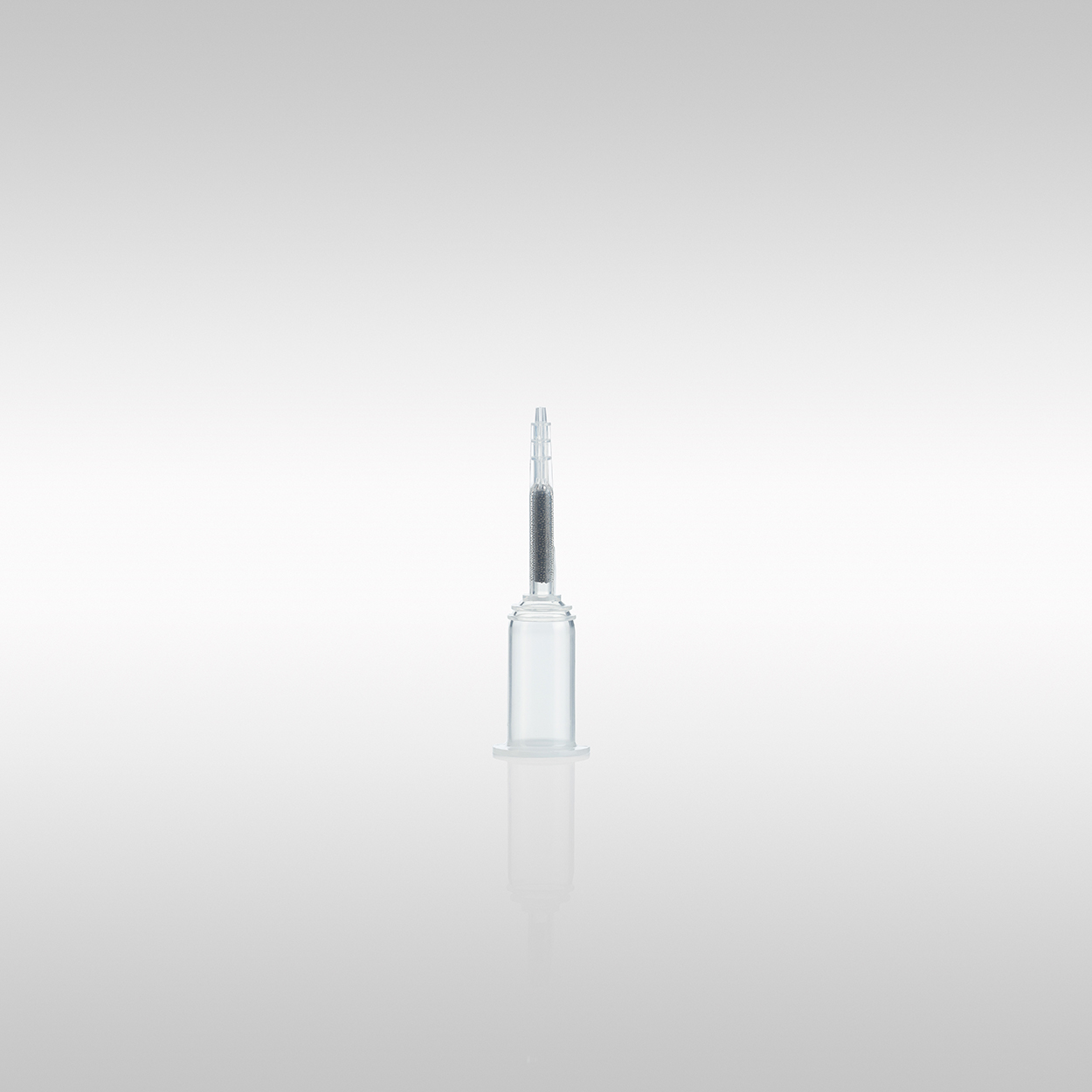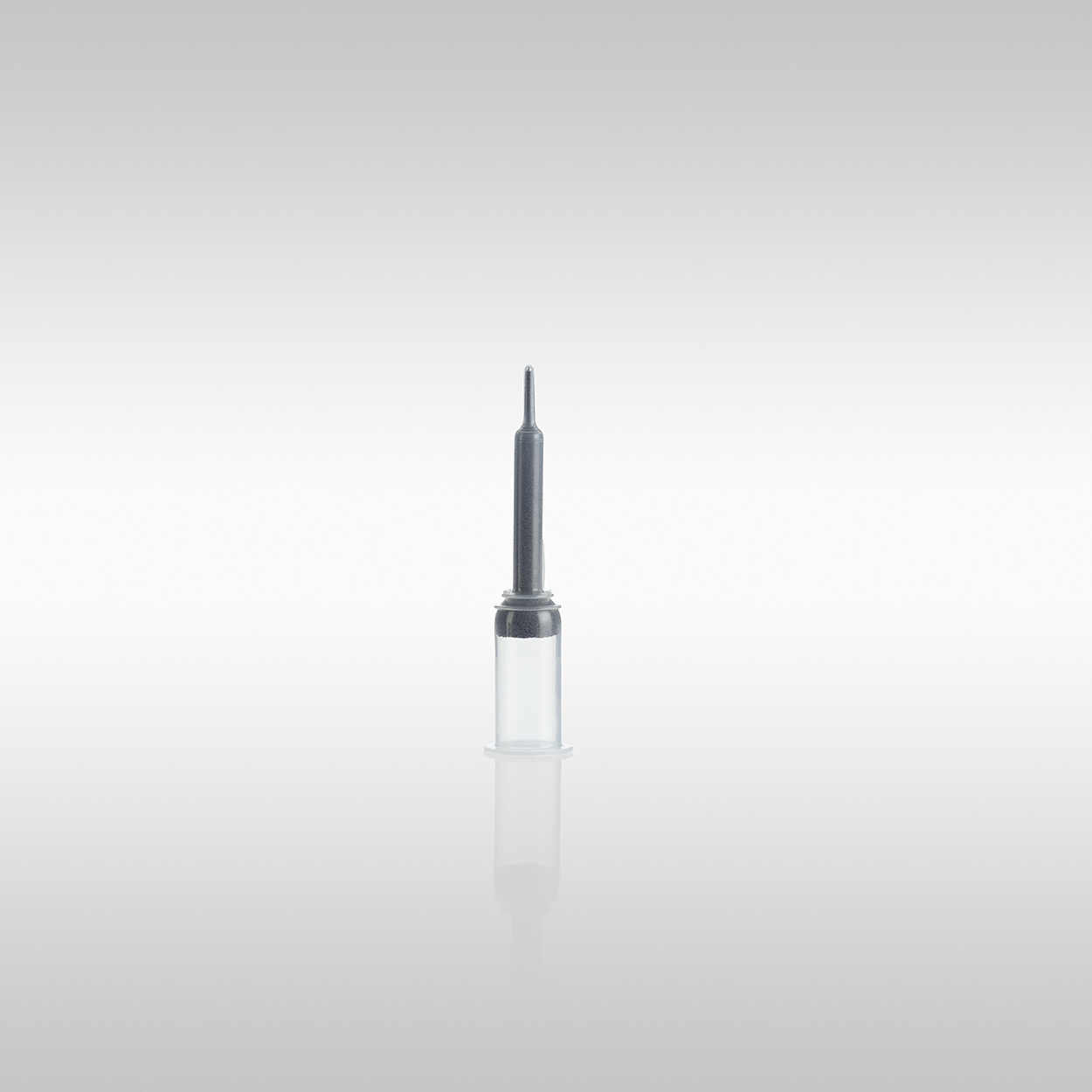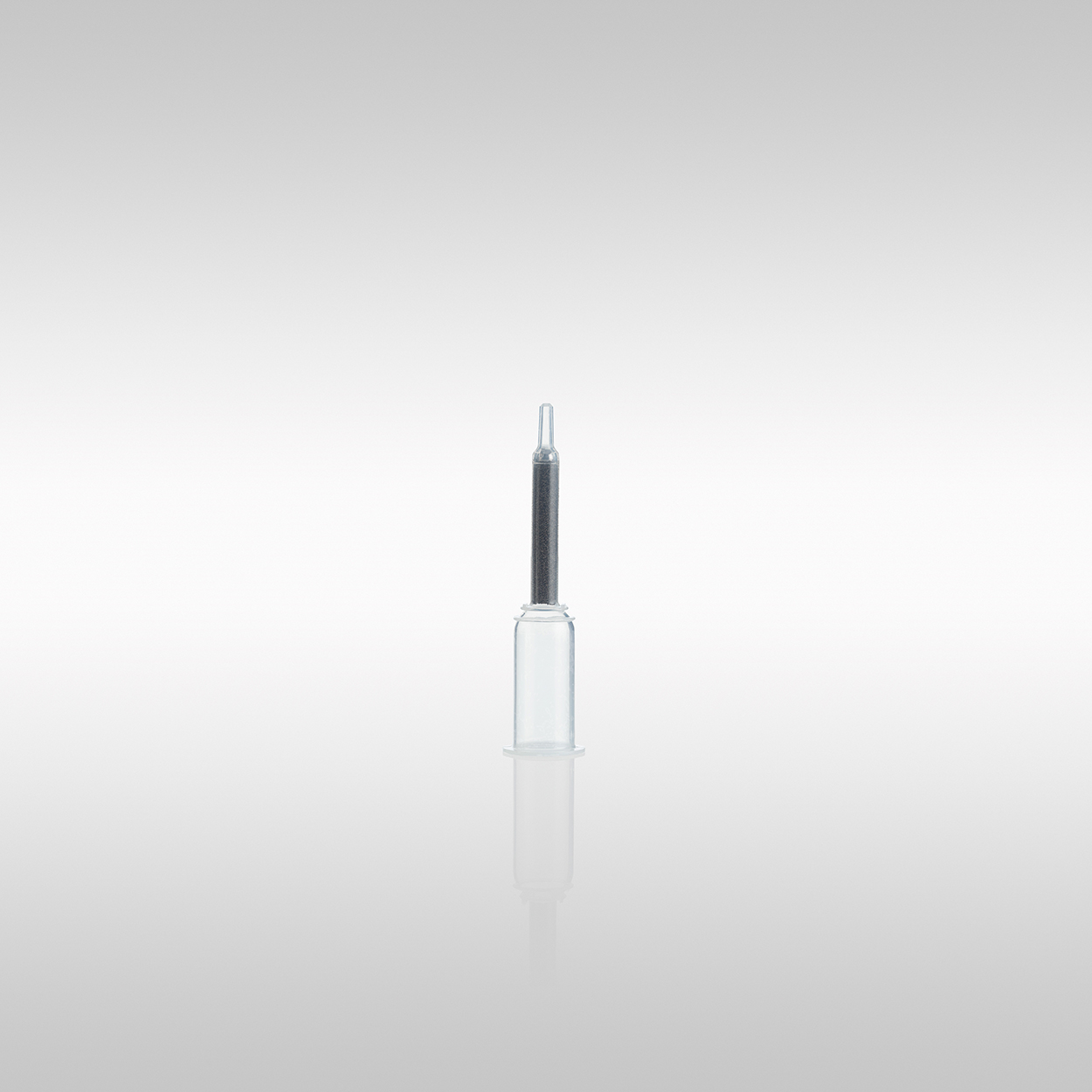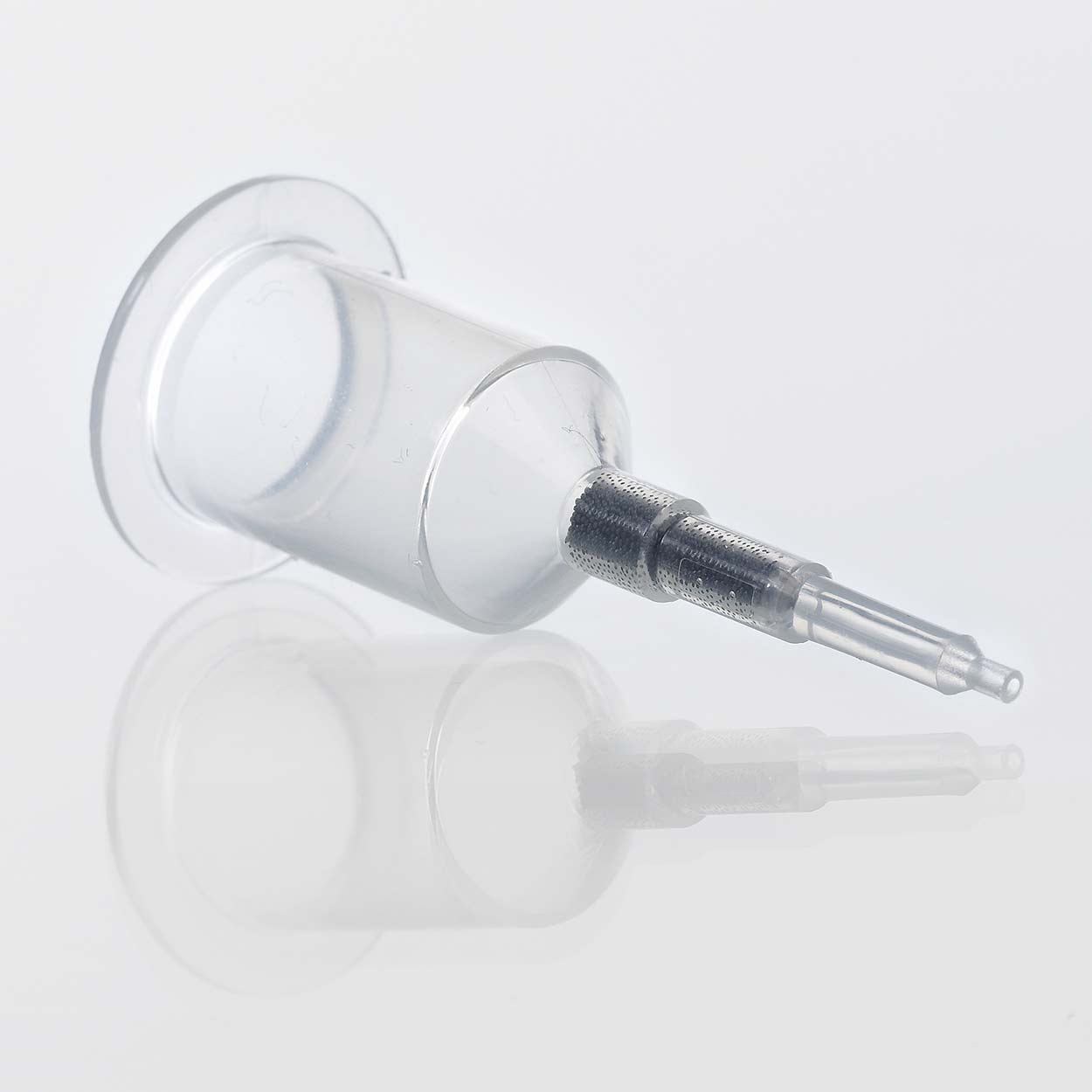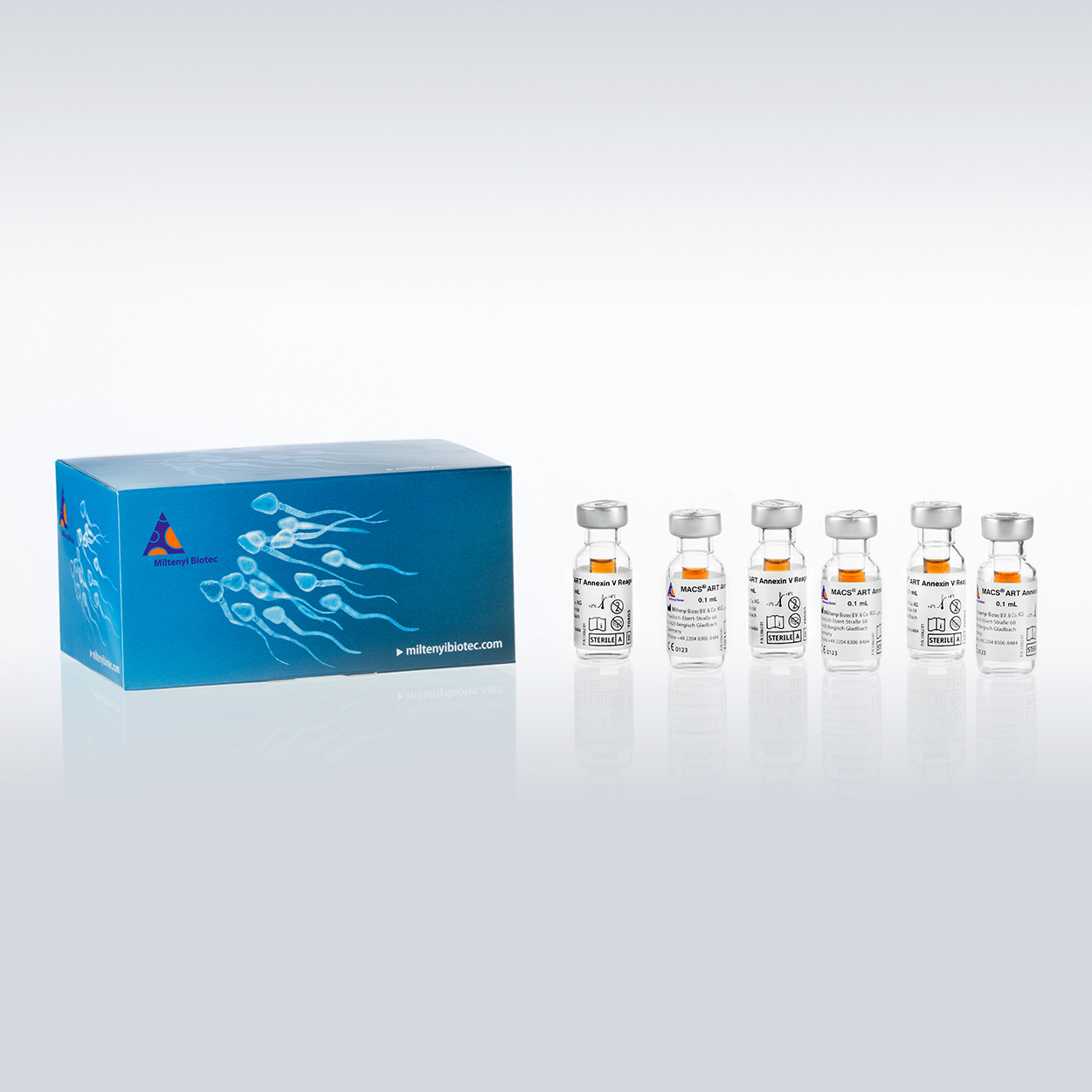Columns
Code: 130-042-701
µ Columns are especially designed for small-scale molecular biology and protein biochemistry applications. Prior to use, the µ Column is placed in a separator, which induces a strong magnetic field within the column. Molecules labeled with the extremely small MACS
®
MicroBeads are retained on the column, whereas unlabeled material can be efficiently washed away. Additionally, enzymatic processing of retained molecules, such as cDNA synthesis, can be performed on the µ Column when placed in the thermoMACS™ Separator. Target molecules can be eluted in a small, convenient volume. Applications using µ Columns include mRNA isolation and cDNA synthesis, immunoprecipitation, purification of DNA and RNA binding proteins, protein interaction studies, or display technologies.
µ Columns are individually packed in a sterile way.
Specifications
Code: 130-110-905
µ Columns with plungers are especially designed for isolation of exosomes from body fluids or cell culture supernatant.
µ Columns can be used with the following separators:
- µMACS Separator
- thermoMACS Separator
Applications
- Isolation of exosomes or extracellular vesicles from cell culture supernatant.
- Isolation of exosomes or extracellular vesicles from body fluids like plasma, urine, or ascites.
Specifications
Code: 130-042-202
The matrix of the Large Cell Columns is composed of ferromagnetic spheres, which are covered with a cell-friendly coating allowing fast and gentle separation of cells. When placed in the magnetic field of a MACS
®
Separator, the spheres amplify the magnetic field by 10,000-fold, thus inducing a high gradient within the column. This is crucial for isolation of cells which are only minimally labeled with MACS
®
MicroBeads, leaving enough epitopes free for concurrent antibody staining. The space between the spheres is several times larger than primary and most cultured cells. This allows the cells to freely flow through the column. Magnetically labeled cells are held in suspension within the column and do not actually “bind” the column matrix. This suspension minimizes stress on the cells and allows for efficient sterile washing by avoiding cell aggregation.
The columns are packed individually in a sterile way.
Specifications
Code: 130-042-901
The matrix of LD Columns is composed of ferromagnetic spheres, which are covered with a cell-friendly coating. When placed in the magnetic field of a MACS
®
Separator, the spheres amplify the magnetic field by 10,000-fold, thus inducing a high gradient within the column. This is crucial for isolation of cells which are only minimally labeled with MACS
®
MicroBeads, leaving enough epitopes free for concurrent antibody staining. The space between the spheres is several times larger than primary and most cultured cells. This allows the cells to freely flow through the column. Magnetically labeled cells are held in suspension within the column and do not actually “bind” the column matrix. This suspension minimizes stress on the cells and allows for efficient sterile washing by avoiding cell aggregation.
LD Columns can be used to separate material less than 30 μm in size. The columns are individually packed in a sterile way.
Specifications
Code: 130-042-401
The matrix of the LS Columns is composed of ferromagnetic spheres, which are covered with a cell-friendly coating allowing fast and gentle separation of cells.When placed in the magnetic field of a MACS
®
Separator, the spheres amplify the magnetic field by 10,000-fold, thus inducing a high gradient within the column. This is crucial for isolation of cells which are only minimally labeled with MACS
®
MicroBeads, leaving enough epitopes free for concurrent antibody staining. The space between the spheres is several times larger than primary and most cultured cells. This allows the cells to freely flow through the column. Magnetically labeled cells are held in suspension within the column and do not actually “bind” the column matrix. This suspension minimizes stress on the cells and allows for efficient sterile washing by avoiding cell aggregation.
LS Columns can be used to separate material less than 30 μm in size. The columns are individually packed in a sterile way.
Specifications
Code: 130-122-729
The matrix of the LS Columns is composed of ferromagnetic spheres, which are covered with a cell-friendly coating allowing fast and gentle separation of cells.When placed in the magnetic field of a MACS
®
Separator, the spheres amplify the magnetic field by 10,000-fold, thus inducing a high gradient within the column. This is crucial for isolation of cells which are only minimally labeled with MACS
®
MicroBeads, leaving enough epitopes free for concurrent antibody staining. The space between the spheres is several times larger than primary and most cultured cells. This allows the cells to freely flow through the column. Magnetically labeled cells are held in suspension within the column and do not actually “bind” the column matrix. This suspension minimizes stress on the cells and allows for efficient sterile washing by avoiding cell aggregation.
LS Columns can be used to separate material less than 30 μm in size. The columns are individually packed in a sterile way.
Specifications
Code: 130-042-801
M Columns are especially designed for molecular biology and protein biochemistry applications which require the binding of larger amounts of molecules. Prior to use, the M Column are placed in a separator, which induces a strong magnetic field within the column. Molecules labeled with the extremely small MACS MicroBeads are retained on the column, whereas unlabeled material can be efficiently washed away. Target molecules can be eluted in a small, convenient volume. M Columns can be used to isolate different molecules, such as mRNA, sequence specific nucleic acids, and proteins for numerous applications like immunoprecipitation, purification of DNA and RNA binding proteins, or analysis of protein interactions or molecular complexes.
M Columns are individually packed in a sterile way.
Specifications
Code: 200-070-500
The MACS ART Annexin V System is intended for the in vitro depletion of apoptotic human spermatozoa. The system selectively depletes unwanted cells using the natural ability of Annexin V to recognize the antigen EPS (externalized phosphatidylserine) in the plasma membrane of apoptotic cells.
Phosphatidylserine-positive cells are efficiently depleted from fresh, cryopreserved, or otherwise manipulated semen samples. The yielded spermatozoa fraction may be used in subsequent operations in Assisted Reproductive Technology.
The enriched sperm populations show higher overall quality in terms of: morphology, motility, DNA fragmentation, apoptosis, cryosurvival rates, and fertilization potential.
Specifications






